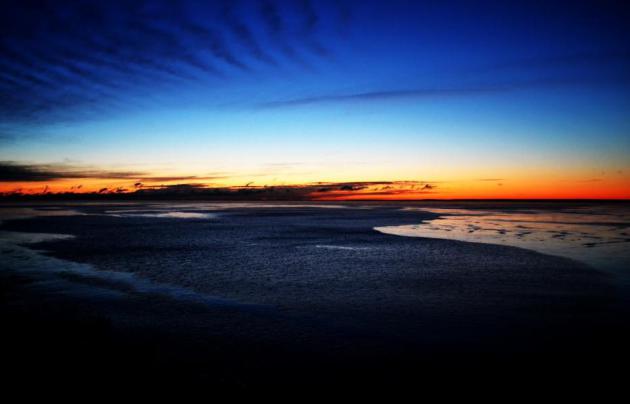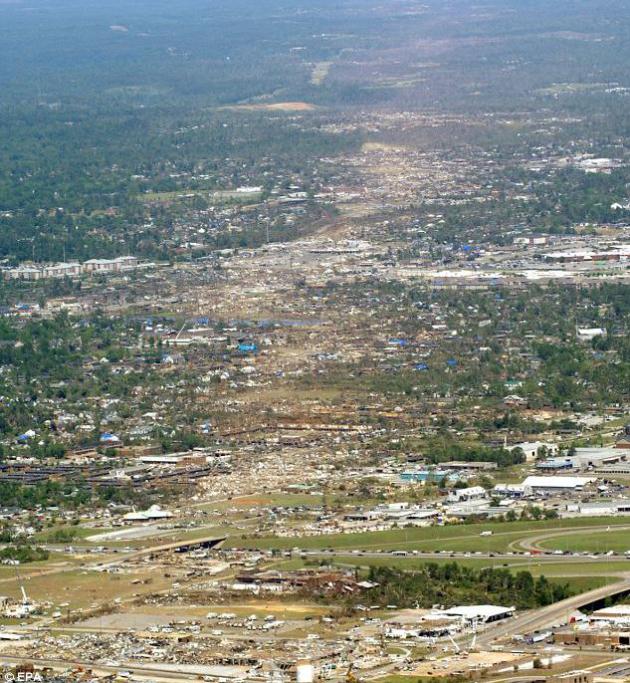30 F. average high on February 23.
26 F. high on February 23, 2015.
February 24, 1835: The temperature at Ft. Snelling falls 26 degrees in only three hours.

Half a Winter This Year - 40s This Weekend
“Each one should test his own actions. Then he can take pride in himself, without comparing himself to somebody else” - Galatians 6:4.
Mark Twain once said "Comparison is the death of joy." Human nature is a stubborn thing. We can't help comparing ourselves to our peers and neighbors. Who's ahead, who's behind; the grass is usually greener elsewhere.
We compare today's weather with what came yesterday, or a 30-year average. This winter was tame, compared to an extended Polar Vortex 2 years ago.
Meteorologists compare model solutions, looking for trends and agreement. Finding the signal amidst the noise is an ongoing challenge. What to believe, when?
The arctic is running 7-14F warmer than average and I'm convinced there's a domino effect. I see more volatility in the system; the models are more erratic. Sunday's arctic front is now a no-show, in fact we may see 40s Friday into Sunday before a glancing blow of colder air late next week. A nuisance snow is possible late Sunday; any big, beefy storms detour south of Minnesota until further notice.
Yes, it's been half a winter.

Supercomputer Quietly Puts U.S. Weather Resources Back on Top. My oldest son works at Cray, but I would have published this link to a USA TODAY story anyway; here's an excerpt that increases my confidence in NOAA's ability to compete (with ECMWF): "...The brand-new Cray supercomputer — designed, owned and operated by the National Oceanic and Atmospheric Administration (NOAA) — processes 3 quadrillion calculations per second. If that sounds like a lot, it is — you'd need about 12,500 high-end laptops to get close to that kind of power. Still, the supercomputer is merely the 18th fastest in the U.S. and 42nd fastest in the world, Michaud said. NOAA's purchase of the school-bus size device stemmed partly from competition from the top European weather model — better known in some circles by its acronym ECMWF (European Center for Medium-range Weather Forecasting). It predicted Sandy's now infamous and unusual left hook in 2012 days before the top American model — the GFS (Global Forecast System)..."
Photo credit above: "The room where the supercomputer sits must be kept at a temperature of between 69 and 72 degrees." (Photo: Jasper Colt, USAT).
Map credit: Climate Reanalyzer.
An Incredible 45 Day Storm Turned California Into a 300-Mile-Long Sea. Here's the intro of an analysis at Yahoo Finance: "A
massive 19th century storm in the pacific United States opened up a
300-mile-long sea that stretched through much of the central part of
California. And it looks like the state is due for another megaflood.
For 43 days, from late 1861 to early 1862, it rained almost nonstop in
central California. Rivers running down the Sierra Nevada mountains
turned into torrents that swept entire towns away. The storm was caused
by an atmospheric river, a large concentration of water vapor that can
cause devastating storms. "[These storms] have the potential of
hurricanes — or even more so because they go on for weeks," Lucy Jones
of the US Geological Survey told NPR..." (Photo credit: A. Rosenfield).
Increasing Drought Threatens Almost All U.S. Forests. Phys.org has a summary of new research findings; here's an excerpt: "Forests nationwide are feeling the heat from increasing drought and climate change, according to a new study by scientists from 14 research institutions. "Over the last two decades, warming temperatures and variable precipitation have increased the severity of forest droughts across much of the continental United States," said James Clark, lead author of the study and an environmental scientist at Duke University..."
Photo credit above: "Drought has left little but skeleton trees in a forest of pinons in the U.S. Southwest." Credit: USGS.
To Prevent Another Dust Bowl, The U.S. Must Sow The Right Seeds. LiveScience and Yahoo Finance have an interesting story - here's a link and excerpt: "...Climate is more important than geography when predicting how well seeds will grow and establish themselves. Seeds don't care where their parents lived if the temperature suits them and if they get the right amount of sunshine and precipitation.
- Timing of seed planting makes a big difference. Year to year, even week to week, variation in weather patterns can affect the restoration success of a burned site.
- The method of planting matters. Blowing seeds from a plane may be a fast way to cover a lot of territory, but it's not that effective. The seeds, dropped from large drums attached to the planes, scatter in the wind, sparsely covering the ground below. Their contact with the earth is also less secure than for seeds planted in furrows by a tractor. As a result, many of the seeds fail to establish themselves, and those few individuals that do will not compete as well in nature as will the densely planted seeds..."
National Geographic ScienceBlogs: Water, Security and Conflict. Violence Over Water in 2015. Is there a connection to what's happening in Syria and Libya? Here's an excerpt from Pacific Institute that raised a few eyebrows: "...Over the past century there has been an increase in the number of reported conflicts over water resources. Part of this increase is certainly due to better reporting in recent years, but growing populations, rising demands for water in water-scarce regions, and weak governance structures and institutions for reducing conflicts at the local and regional level may also be contributing to an increase. In the coming years, far more effort is need to both understand the nature of these risks and to develop diplomatic, economic, and institutional tools for reducing conflicts over water resources. The Pacific Institute will continue to be the leading source for collecting and analyzing information on these challenges..."
Chart credit: "Water conflict chronology events per year, 1930 to 2015." From the Pacific Institute.
8 Interesting Facts About Winter. The information in today's column about the origin of "winter" came from a story at the UK Met Office, which adds: "...You might surprised to know that in the northern hemisphere the earth is closest to the sun during winter. On January 2 2016 the Earth will reach perihelion (peri meaning 'near' and helion meaning 'sun') and the earth is 3.1 million miles closer to the sun than at aphelion (around July 5 when the earth is furthest from the sun). Earth's distance from the sun is not what causes the seasons (it is the tilt of the earth's axis) but it does affect the length of them. Around perihelion the earth is moving around 1 kilometre per second faster than at aphelion which results in winter being 5 days shorter than summer..."
Forests
nationwide are feeling the heat from increasing drought and climate
change, according to a new study by scientists from 14 research
institutions.
Read more at: http://phys.org/news/2016-02-drought-threatens-forests.html#jCp
Read more at: http://phys.org/news/2016-02-drought-threatens-forests.html#jCp

Photo credit above: Trevor Cokley.




What's Next in Computing? Medium
has a long and interesting article about AI, drones, virtual reality,
mobile intelligence and IoT; a worthy read. Here's an excerpt: "...I
tend to think we are on the cusp of not one but multiple new eras. The
“peace dividend of the smartphone war” created a Cambrian explosion of
new devices, and developments in software, especially AI, will make
those devices smart and useful. Many of the futuristic technologies
discussed above exist today, and will be broadly accessible in the near
future. Observers have noted that many of these new devices are in their
“awkward adolescence.”
That is because they are in their gestation phase. Like PCs in the 70s,
the internet in the 80s, and smartphones in the early 2000s, we are
seeing pieces of a future that isn’t quite here. But
the future is coming: markets go up and down, and excitement ebbs and
flows, but computing technology marches steadily forward."
Video credit: The Terminator (1984)
TODAY: More clouds than sun, dry. Winds: N 8-13. High: 35
WEDNESDAY NIGHT: Partly cloudy. Low: 25
THURSDAY: Chilly breeze, a few flurries in the air. Winds: NW 10-20. High: 33
FRIDAY: Chilly start. Glimmers of sun, average temps by late afternoon Winds: SW 8-13. High: 36
SATURDAY: Some sun, feels like late March. Winds: SW 10-20. Wake-up: 31. High: 46
SUNDAY: Mild start. PM rain/snow mix. Wake-up: 33. High: 43 (midday, falling thru the 30s by afternoon)
MONDAY: Overcast sky, damp breeze. Wake-up: 29. High: near 40
TUESDAY: Storm probably tracks south of Minnesota, brushed by a few flurries? Wake-up: 26. High: 33
Climate Stories....
Congress Actually Did Something Pretty Great on Climate Change. Some uplifting, encouraging perspective from Mother Jones; here's an excerpt: "In December, Republicans in Congress struck a deal with Democrats to extend a package of tax breaks for wind and solar energy projects. Prior to the deal, things looked bleak. The tax credit for wind had already expired the year before, and the one for solar was set to expire by 2016. So the extension, which came after Democrats agreed to support lifting the long-standing ban on US oil exports, was a big and unexpected win for clean energy—one that will help buoy the industry for the next six years. It could also prove to be one of the most significant actions taken by this Congress to reduce America's carbon footprint, according to a new analysis from the National Renewable Energy Laboratory..." (File image: Wikipedia).
Graphic credit above: "Climate change has helped shift the odds of extreme heat." Credit: WXshift
Photo credit above: "Demonstrators gather before the start of the People’s Climate March in New York on Sept. 21, 2014." (Timothy Fadek/Bloomberg).
Seas Are Rising at the Fastest Rate in the Last 28 Centuries. Climate
change will more than a minor inconvenience for residents of Miami
Beach, Norfolk or coastal Louisiana. It already is. Here's the intro to a
story from Justin Gillis at The New York Times: "The
oceans are rising faster than at any point in the last 28 centuries,
and human emissions of greenhouse gases are primarily responsible,
scientists reported Monday. They added that the flooding that is
starting to make life miserable in many coastal towns — like Miami
Beach; Norfolk, Va.; and Charleston, S.C. — was largely a consequence of
those emissions, and that it is likely to grow worse in coming years.
The scientists confirmed previous estimates, but with a larger data set,
that if global emissions continue at a high rate over the next few
decades, the ocean could rise as much as three or four feet by 2100, as
ocean water expands and the great ice sheets in Greenland and Antarctica
begin to collapse..."
Photo credit above: "Waves
striking the promenade in San Sebastián, Spain, earlier this month.
Scientists warned on Monday that flooding driven by climate change is
likely to worsen in coming years." Credit Juan Herrero/European Pressphoto Agency
That Sinking Feeling. Keep an eye on South Florida in the coming years - and think twice before purchasing beachfront property. Here's an excerpt from American Prospect: "...In Southeast Florida, the sea could rise three feet by 2060, and that doesn’t count temporary storm surges from increasingly intense hurricanes. Seventy-five percent of Florida’s population lives in coastal counties that generate 79 percent of the state’s total annual economy. The infrastructure in these coastal counties had a replacement value of $2 trillion in 2010 and is estimated to increase to $3 trillion by 2030. Of the 2.6 million people who live in Miami-Dade County, nearly 129,000 of them are living less than three feet above sea level. The county alone has more people living less than four feet above sea level than in any other state except Louisiana. The county’s estimated beachfront property value is more than $14.7 billion—not including infrastructure..."
Photo credit above: AP Photo/Lynne Sladky. "A cyclist and vehicles negotiate heavily flooded streets as rain falls, Tuesday, September 23, 2014, in Miami Beach, Fla. Certain neighborhoods regularly experience flooding during heavy rains and extreme high tides. New storm water pumps are currently being installed along the bay front in Miami Beach."
No comments:
Post a Comment